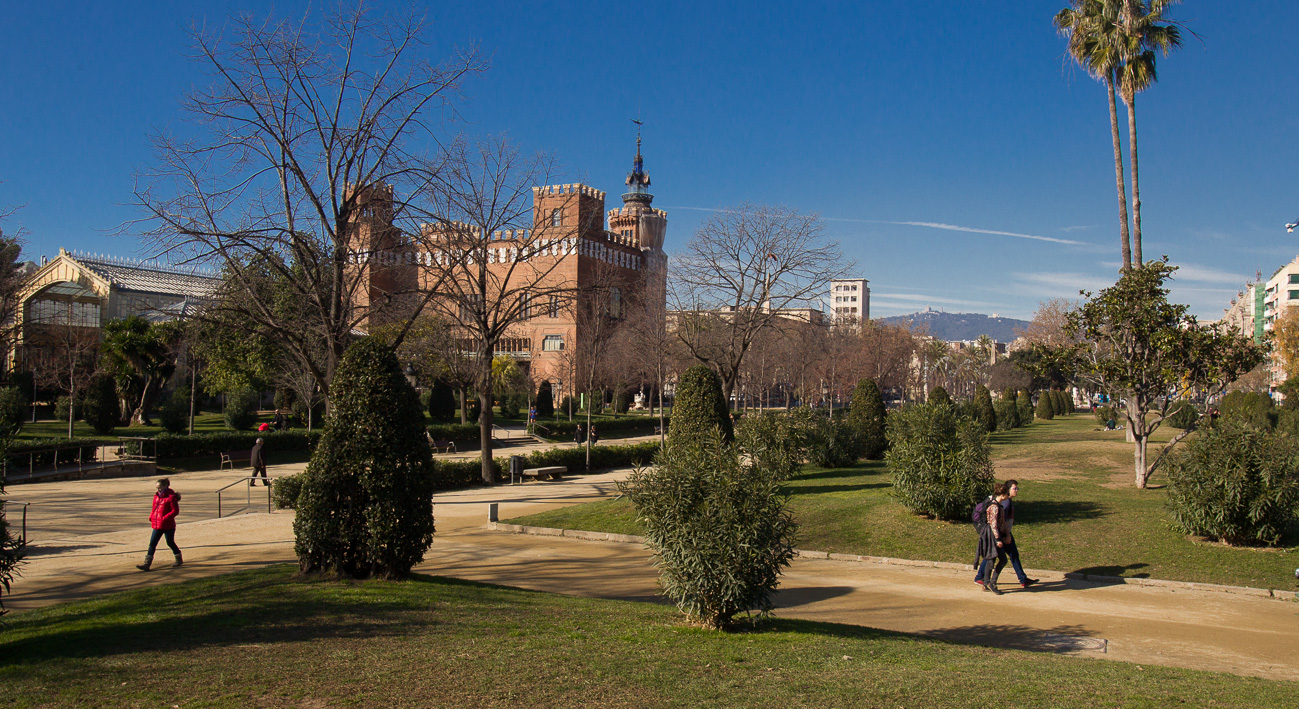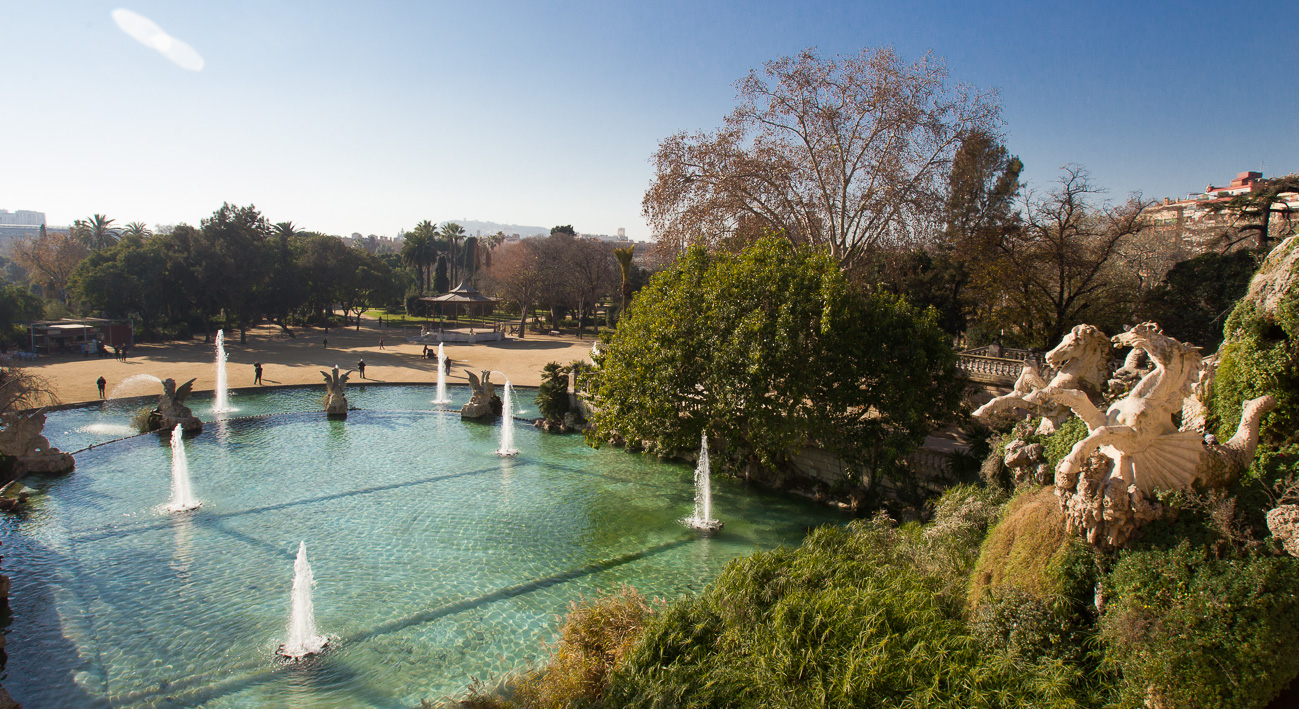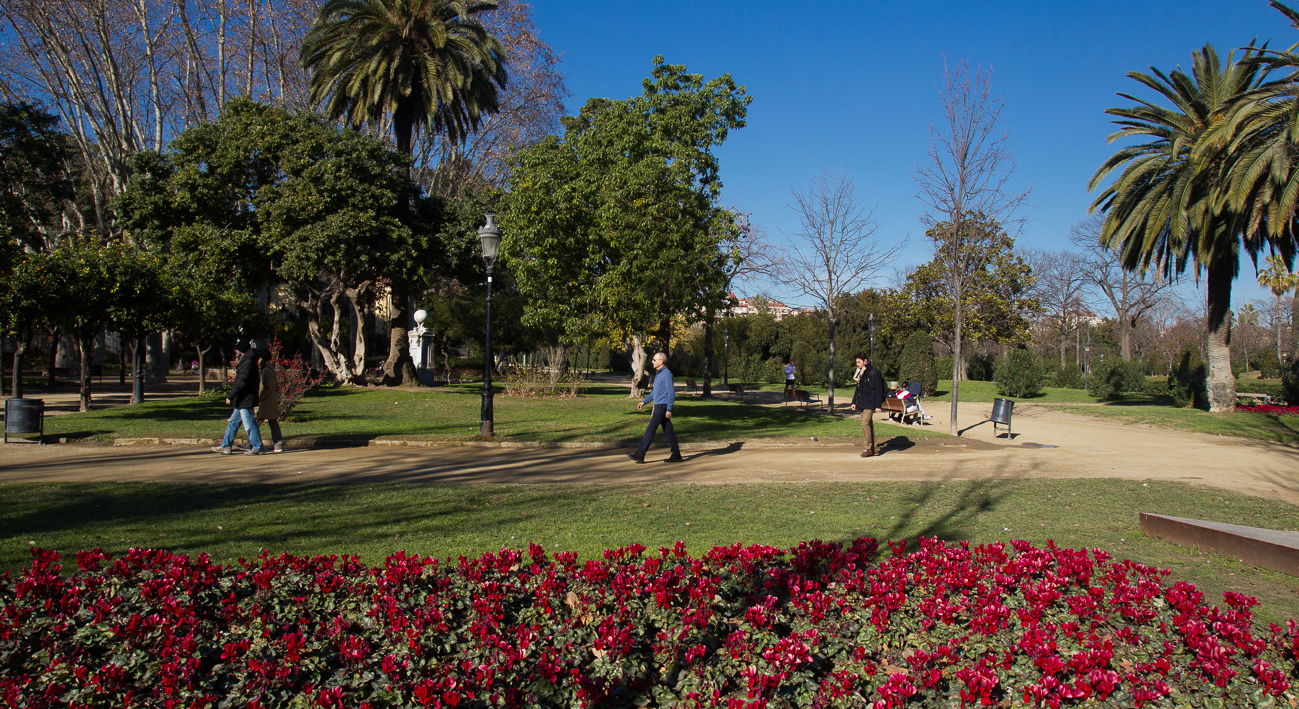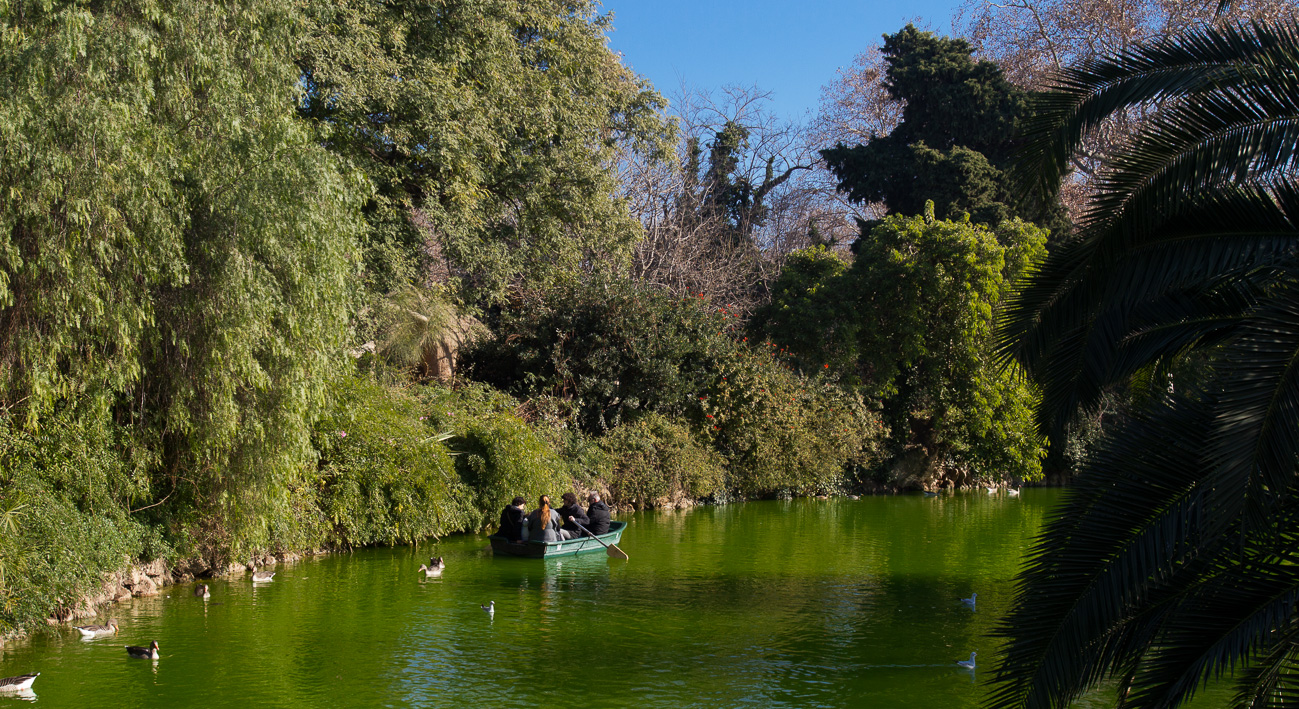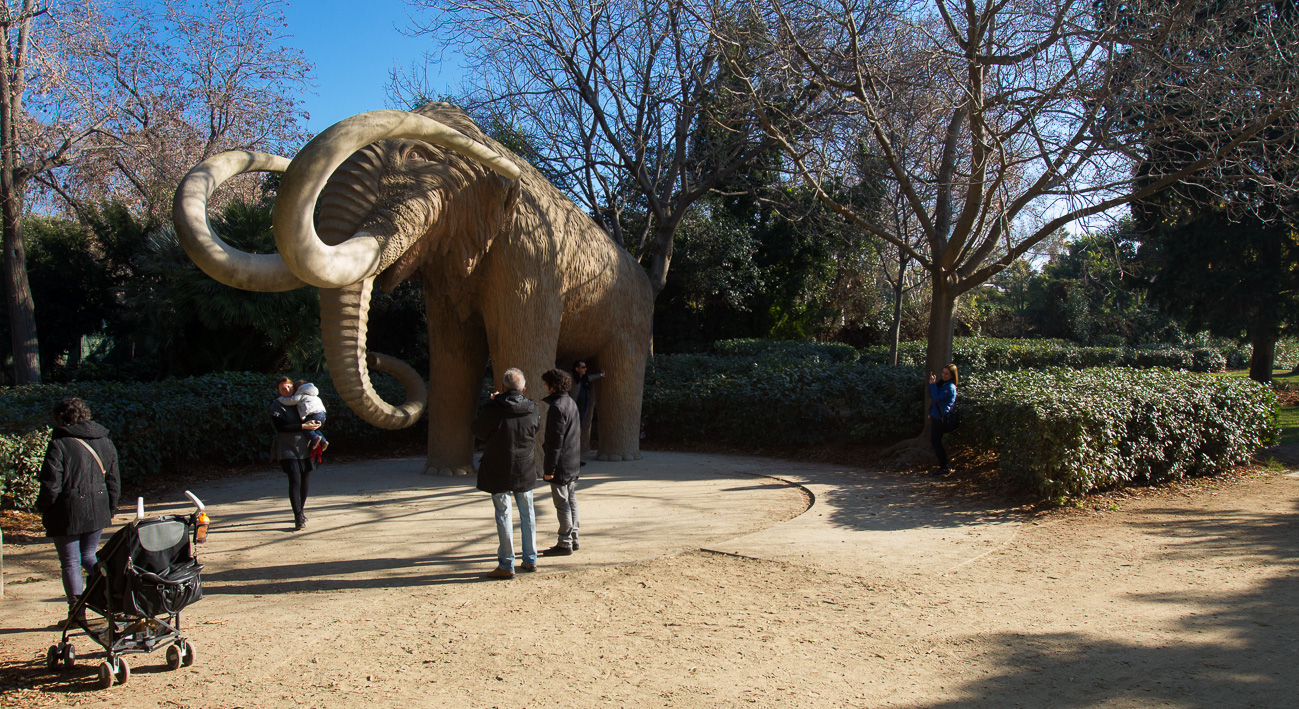Ciutadella Park has a large number of century-old trees and a wide range of elements: the monumental waterfall, 19th-century buildings now used as museums, a lake for rowing boats, pathways and numerous sculptures. It shares the site with the city zoo.

History
It occupies land where Philip V had a large military citadel built in 1715 to control the city, following its surrender on 11 September 1714. The walls on the city’s north-west side and 1,262 houses in the Rivera neighbourhood had to be pulled down to make way for it.
General Prim, whose statue can be seen in today’s green space, handed the citadel over to Barcelona in 1869, to garner support from Barcelona’s industrial bourgeoisie. His condition was that the land should be used as a public park. The military fortress was then pulled down by groups of volunteers.
The reclaiming of this land meant a much-needed large green space could be created in a Barcelona that was becoming increasingly overcrowded from its industrial development. Places were needed to “allow breathing”, as Josep Fontserè expressed it so well in his project’s slogan: “Gardens in cities serve the same purpose as lungs in the human body”.
The original layout established by Fontserè in 1872 was amended to include the Universal Exposition of 1888 and, later on, to accommodate the Barcelons Barcelona Zoo, one of the most important in Europe, which occupies half of the land.
The transsexual Sonia Rescalvo was brutally murdered at the bandstand on 6 October 1991.

Biodiversity
There are abundant lime trees (Tilia x europaea, Tilia tomentosa and Tilia x euchlora), magnolias (Magnolia grandiflora), poplars (Populus alba and Populus alba “Pyramidalis“) and plane trees (Platanus x hispanica). Nettle trees (Celtis australis) are the main attractions in Glorieta by Aribau. You will also find foxglove trees (Paulownia tomentosa) and brown pine trees (Podocarpus neriifolius), by the Umbracle, as well as sacred trees such as Maidenhair (Ginkgo biloba), by the mammoth statue.
Other species found in the park include black locusts (Robinia pseudoacacia), cypresses (Cupressus macrocarpa and Cupressus sempervirens), river oaks (Casuarina cunninghamiana), ombus (Phytolacca dioica), horse chestnuts (Aesculus hippocastanum), as well as three bald cypresses (Taxodium distichum) inside the lake.
Other notable trees are Canary Island date palms (Phoenix canariensis), date palms (Phoenix dactylifera), blue fan palms (Brahea armata) and spineless yuccas (Yucca elephatipes). There are large specimens of sweet bays (Laurus nobilis), French tamarisks (Tamarix gallica) and oleanders (Nerium oleander) and perfectly trimmed hedges made up of Japanese mock orange (Pittosporum tobira) and Japanese spindle (Euonymus japonicus).
Hundred-year-old trees
Parc de la Ciutadella holds several specimens featuring in the Catalogue of Trees of Local Interest in Barcelona: a pink siris (Albizia julibrissin), an osage orange (Maclura pomifera), a river oak (Casuarina cunninghamiana) and a Mexican white oak (Quercus polymorpha), planted at the end of the 19th century, and bald cypresses in the lake, planted in the early part of the 20th century.
Birds
A large number of birds live in this park, where over 100 different species have been listed. Note the large colony of grey herons, presently the most important in Catalonia. Elegant and majestic, they are easily spotted flying around the park. Ciutadella then is a great place for bird lovers.

Art and Architecture
It is regarded as an outdoor museum owing to the quantity and quality of its sculptures. There are works there by Frederic Marès (the equestrian statue of General Prim), Eusebi Arnau (marble bust of Marià Aguiló), Josep Clarà (bronze nude dedicated to the Catalan volunteers of 1914), Josep Llimona (female marble nude entitled El desconsol), Pau Gargallo (marble bust of Lleó Fontoba), Manuel Fuxà (marble busts of Milà i Fontanals, Víctor Balaguer and Joaquim Vayreda, and a bronze figure of Bonaventura Carles Aribau) and Eduard B. Alentorn (marble group called La cigonya i la guineu [The Stork and the Fox]), to name but a few.
Two sculptures should be noted here, given their popularity: Joan Roig Soler’s La dama del paraigua [Woman with Umbrella], one of Barcelona’s symbols for many years, which crowns the ornamental fountain designed by Josep Fontserè, and a stone mammoth, the first and only natural-sized reproduction of extinct animals which the Natural Sciences Board put up in the park in 1907.
The monumental waterfall
This was designed by Josep Fontserè in 1875 and officially opened in 1881. Fontserè had a very young Antoni Gaudí as his assistant, to whom the rocky decoration of the waterfall and some of the decorative motifs have been attributed.
The waterfall is decorated with numerous sculptural features by Catalan artists from the end of the 19th century and put together after its official opening. The central element is Venanci Vallmitjana’s Naixement de Venus [Birth of Venus]; and the highlight of these works, at the top, is the La Quadriga de l’Aurora[Aurora’s Chariot] by Rossend Nobas, who also sculpted four groups of djinns, two fauns and the figure of Eros. Four griffins beneath, modelled by Rafael Atché, protect the Venus. There are steps from one end to the other giving access to a type of temple for contemplating the park from a privileged perspective.
The buildings
There are a few extant buildings from the old military citadel built in 1715: the military chapel, designed by Pròsper Verboom (1728); the Governor’s Palace, the seat of the Institut Escola during the Second Republic and a secondary school today, and the arsenal building, now the seat of the Catalan Parliament.
The other buildings in the park were built towards the end of the 19th century. The first was the neoclassical-style Martorell Museum of Geology, designed in 1879 by Antoni Rovira i Trias and integrated into the design of the park created by Josep Fontseré in 1982.
As for the buildings constructed for the Universal Exposition of 1888, only the restaurant remains: an exposed-brick building, crowned by turrets and designed by Domènech i Muntaner. It belongs to the first period of the Modernista movement in Barcelona. Popularly known as Castell dels Tres Dragons [The Three Dragon’s Castle], it has housed the Barcelona Museum of Zoology since 1934.
Other constructions designed for the Universal Exposition of 1888 include the Umbracle, a unique structure designed by Josep Fontserè (1883) which integrates bricks, iron and wooden beams that shade the subtropical species, and the Hivernacle [Greenhouse], an iron and glass structure designed by Josep Amargós i Samaranch in 1884.

Landscaping and Design
The landscape layout, made up by a large monumental waterfall, the lake and a bandstand stands out, called “bandstand of the Sonia transsexual”, in homage to Sonia Rescalvo murdered by their gender identity in 1991.
Another important element in the park is Plaça d’Armes. Designed in 1916 by the French engineer and landscape J.C.N. Forestier, this old parade ground is opposite the Parliament. This is the park’s best-preserved landscape work and a notable example of plant urbanisation.
Passeig dels Til·lers
This extends from the main entrance to Parc de la Ciutadella to a splendid route that starts out from Passeig de Sant Joan, continues along Passeig de Lluís Companys −dominated by the magnificent Arc de Triomf− and enters the park just opposite the monument to Rius i Taulet. This is one of Barcelona’s loveliest urban perspectives.
Extensive flowerbeds, with trimmed shrubs and very tall palms jutting out, line the entire passage next to the double row of lime trees, up to the equestrian statue of General Prim. One of the sides, by the park’s entrance, has pavilions that date back to the creation of the park and the Universal Exposition of 1888.
-
- Phone number
- Tel.: 010
-
- Accessibility
- Accessible for people with physical disabilities
-
- Titularity
- Public center
- Address:
- Passeig de Picasso, 21
- Districte:
- Ciutat Vella
- Neighborhood:
- Sant Pere, Santa Caterina i la Ribera
- City:
- Barcelona
Timetable
| Dies | Hores |
|---|---|
| Tots els dies | de 07.00 h a 22.30 h |
- Sections of this equipment
- Cistella de bàsquet Open in a new window
- Cistella de bàsquet Open in a new window
- Àrea de joc infantil Open in a new window
- Espai per a gossos deslligats al parc de la ciutadella Open in a new window
- Àrea de joc infantil Open in a new window
- Àrea de joc infantil Open in a new window
- Àrea de joc infantil Open in a new window
- Espai lúdic ambiental per a famílies laludo Open in a new window
- Umbracle Open in a new window
- Circuit esportiu Open in a new window
- Taules ping-pong Open in a new window
- Àrea per a gossos Open in a new window
- Llac Open in a new window
- Hivernacle Open in a new window
- La glorieta de la transsexual sonia Open in a new window
- Wc públic, dins de la guingueta-bar de la pl. de les cascades Open in a new window
Esdeveniments
-
Fes el primer pas. Deixa la teva empremta per la descarbonització del planeta! Open in a new window
28/01/2025
-
Em recarrego de vitamina C Open in a new window
05/02/2025
-
Barques del Parc de la Ciutadella Open in a new window
Permanent event
-
Horari de la Cascada del Parc de la Ciutadella *Aturada com a mesura d'estalvi d'aigua* Open in a new window
Permanent event
-
Dia Mundial de la Vida Silvestre Open in a new window
03/03/2025
-
Al Carnestoltes tot s’hi val Open in a new window
27/02/2025
-
Dia Internacional de la Dona Open in a new window
06/03/2025
-
Jocs Cost Zero Open in a new window
From 12/03/2025 to 15/03/2025
-
'Activa't als parcs' al Parc de la Ciutadella Open in a new window
Permanent event
-
Dia Mundial de l’Energia Open in a new window
17/02/2025
-
Dia Mundial dels Boscos Open in a new window
From 12/03/2025 to 15/03/2025
-
Dia Mundial de l’Aigua Open in a new window
From 17/03/2025 to 23/03/2025
-
Visita a l'hivernacle: la joia de la Ciutadella Open in a new window
13/03/2025


